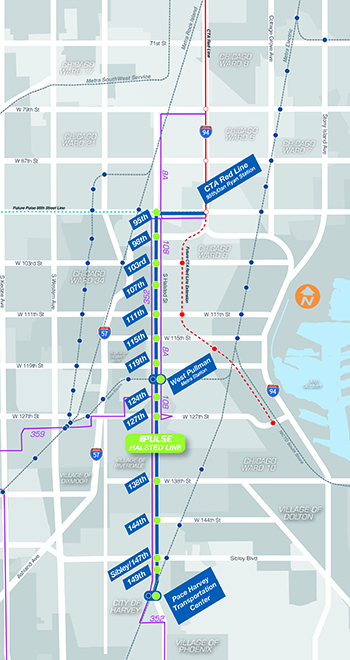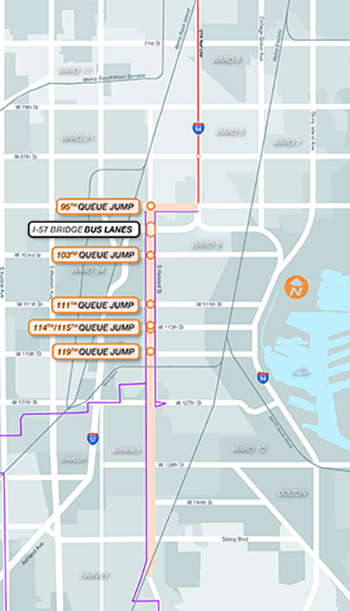South Halsted Street is Pace’s highest-ridership corridor and has seen among the strongest ridership recovery in a post-COVID world, indicating the importance of public transportation for people living and working along the corridor. A new Pulse line will improve travel times and reliability of bus service for the thousands of current customers and make transit a more attractive option for many more.
Pulse provides various improvements over current service including:
- Fast, reliable, and frequent service to your favorite destinations
- Free Wi-Fi and other amenities on Pulse-branded buses
- Modern, heated stations
- Real-time next bus arrival information
- Faster boarding and improved accessibility at stations
- Transit priority treatments including dedicated bus lanes through one of the most congested parts of the corridor
- “Queue jumps” that allow buses to skip traffic backups at the most congested intersections
- Transit Signal Priority for buses throughout the corridor ensuring reliable service
- Improved connections to other transit services
Location
The 8.5 mile project corridor consists of approximately 7.5 miles of South Halsted Street, from the Pace Harvey Transportation Center to 95th Street, and then continuing east along 95th Street to connect to the CTA 95th/Dan Ryan Red Line station. The project corridor serves the communities of Harvey, Phoenix, Calumet Park, Riverdale, Dixmoor and the City of Chicago neighborhoods of West Pullman, Morgan Park, Roseland, and Washington Heights.

Current transit service in the project area is provided by CTA routes #108 and #8A and by Pace routes #348, #350, #352 and #359. Numerous other CTA and Pace bus routes overlap part of the corridor providing connecting services. The corridor also intersects with the Metra Electric Line at the West Pullman and Harvey Stations, and the CTA Red Line 95th/Dan Ryan Stations.
Queue jumps are proposed at select locations along the Pulse Halsted Line they providing buses with the ability to bypass traffic at busy intersections. Queue jumps are short segments of bus lanes paired with special bus-only traffic signals that allow buses to jump ahead of other traffic. Below is a map showing locations of the proposed queue jumps and bus lanes.

